Source:Goolge.com.pk
How To Draw Pencil Drawings Biography
Welcome to the drawing materials section. Some of the most common e-mails I get are the ones asking which materials I use and would recommend. This section is intended to give you an overview. I buy all of my supplies from Blick Art Materials . Buying your stuff from that link helps me keep adding to this site.
Pencils
First of all lets talk about pencils. Pencils are woodcased writing utensils containing pigment. The pigment could be colored, pastel, charcoal, or graphite. I will be talking about graphite in this case. Graphite pencils are available in many different grades ranging from 9B (softest) to 9H (hardest). Soft graphites have less clay in them and they are darker than H graphites. Hard graphites have more clay and are lighter than B graphites. Below is a chart illustrating the different grades of graphite.
There are lots of different pencil brands. I use Derwent Graphic Pencils . Most grades are unnecessary in my opinion. For most of my drawings I only use the following 5 grades, 7B, 3B, B, HB, 2H. Anything harder than a 2H graphite will most likely dent your paper, ruining the fibres.
Sometimes when I'm drawing I need a more precise tool. I have two .5mm Mechanical Pencils that I use. One pencil is filled with 2B graphite and the other with HB. They look identical so I wrapped one with colored tape to tell them apart.
Drawing paper
I think drawing paper is just as important as pencils. In the years that I've been drawing I've tested out lots of different types and brands. I have two favorite kinds. One is Strathmore 300 Series Bristol Smooth . It's acid free, 100 lb, and has an extremely smooth surface. I use this paper when I am doing sketches, not so much for finished drawings. For finished drawings my favorite paper is Fabriano Artistico Bright White Hotpressed Watercolor Paper . This paper is acid free, 140 lb, with one smooth side and one rougher side. It has a really consistent surface, perfect for drawing. I buy Fabriano paper in what's called a "block". A block is tape bound on all 4 sides so that the paper won't warp when watercolors are applied. It's easy to seperate each piece from the block. Fabriano paper is almost three times the price of Bristol but it's a better quality paper. Bristol is almost too smooth sometimes. It has almost no tooth to hold graphite so it is a pain to build up tones. Fabriano has enough tooth to hold graphite yet it's still smooth. Both papers are great to work on but if you have the money, the Fabriano is the best choice.
Blending Materials
I use a variety of blending tools when I am drawing. My favorite blenders that I use are regular facial tissues. They produce very smooth shading. I also use Blending Stumps. A blending stump is a cylindrical drawing tool, tapered at the ends and usually made of tightly rolled felt. You should get yourself a few stumps in different sizes. I keep a piece of fine sand paper around to sharpen the ends of my blending stumps to keep them sharp. The last blending tool that I use are q-tips (or "earbuds" for you europeans). Q-tips produce very smooth shading and chances are, you already have them in your house. Experiment with different fabrics and materials. I've heard other artists say that chamois cloth is a great blending tool.
Erasers
We are human and we make mistakes. For the occassional screw up you should have a few different erasers on hand. The first is a Kneaded Rubber Eraser . These can be molded to whatever shape you need. I use my kneadable eraser all the time. Another eraser that I use a lot is the Tuff Stuff Eraser Stick . This eraser is basically a pencil but instead of having graphite inside, it has an eraser. It's great because you can keep it sharp and use it for erasing fine details. Alot of artists use a sticky putty adhesive called blu-tak. Blu-Tak was developed in the UK and I believe it's sold only there. There are lots of imitation products here in the United States that will do the same thing. I use Duck brand poster Putty. Any poster putty will work.
Fixative
If you want to protect your drawing when it's done you will need to get some Fixative. Fixative is an acrylate spray coating that will protect and preserve your work. I would recommend Winsor & Newton Workable Fixative . It's the only fixative I use. I've had bad experiences with other brands. I would NOT recommend buying Grumbacher or Krylon fixatives. When I first started drawing I used hairspray to fixate my finished work. Years later, the paper on these drawings has turned yellow. This is because of the alcohol in hairspray. So if you want your work to last, pick up some quality fixative.
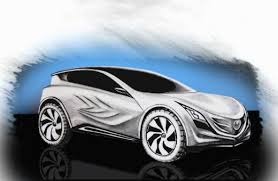
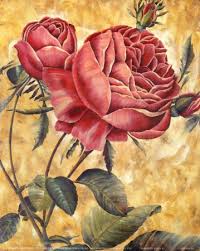
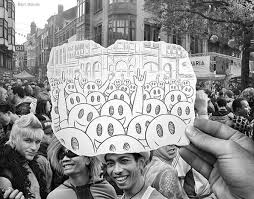
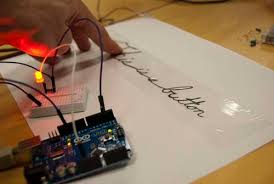

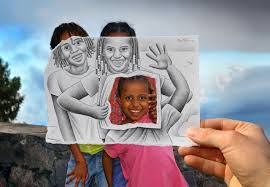


How To Draw Pencil Drawings Biography
Welcome to the drawing materials section. Some of the most common e-mails I get are the ones asking which materials I use and would recommend. This section is intended to give you an overview. I buy all of my supplies from Blick Art Materials . Buying your stuff from that link helps me keep adding to this site.
Pencils
First of all lets talk about pencils. Pencils are woodcased writing utensils containing pigment. The pigment could be colored, pastel, charcoal, or graphite. I will be talking about graphite in this case. Graphite pencils are available in many different grades ranging from 9B (softest) to 9H (hardest). Soft graphites have less clay in them and they are darker than H graphites. Hard graphites have more clay and are lighter than B graphites. Below is a chart illustrating the different grades of graphite.
There are lots of different pencil brands. I use Derwent Graphic Pencils . Most grades are unnecessary in my opinion. For most of my drawings I only use the following 5 grades, 7B, 3B, B, HB, 2H. Anything harder than a 2H graphite will most likely dent your paper, ruining the fibres.
Sometimes when I'm drawing I need a more precise tool. I have two .5mm Mechanical Pencils that I use. One pencil is filled with 2B graphite and the other with HB. They look identical so I wrapped one with colored tape to tell them apart.
Drawing paper
I think drawing paper is just as important as pencils. In the years that I've been drawing I've tested out lots of different types and brands. I have two favorite kinds. One is Strathmore 300 Series Bristol Smooth . It's acid free, 100 lb, and has an extremely smooth surface. I use this paper when I am doing sketches, not so much for finished drawings. For finished drawings my favorite paper is Fabriano Artistico Bright White Hotpressed Watercolor Paper . This paper is acid free, 140 lb, with one smooth side and one rougher side. It has a really consistent surface, perfect for drawing. I buy Fabriano paper in what's called a "block". A block is tape bound on all 4 sides so that the paper won't warp when watercolors are applied. It's easy to seperate each piece from the block. Fabriano paper is almost three times the price of Bristol but it's a better quality paper. Bristol is almost too smooth sometimes. It has almost no tooth to hold graphite so it is a pain to build up tones. Fabriano has enough tooth to hold graphite yet it's still smooth. Both papers are great to work on but if you have the money, the Fabriano is the best choice.
Blending Materials
I use a variety of blending tools when I am drawing. My favorite blenders that I use are regular facial tissues. They produce very smooth shading. I also use Blending Stumps. A blending stump is a cylindrical drawing tool, tapered at the ends and usually made of tightly rolled felt. You should get yourself a few stumps in different sizes. I keep a piece of fine sand paper around to sharpen the ends of my blending stumps to keep them sharp. The last blending tool that I use are q-tips (or "earbuds" for you europeans). Q-tips produce very smooth shading and chances are, you already have them in your house. Experiment with different fabrics and materials. I've heard other artists say that chamois cloth is a great blending tool.
Erasers
We are human and we make mistakes. For the occassional screw up you should have a few different erasers on hand. The first is a Kneaded Rubber Eraser . These can be molded to whatever shape you need. I use my kneadable eraser all the time. Another eraser that I use a lot is the Tuff Stuff Eraser Stick . This eraser is basically a pencil but instead of having graphite inside, it has an eraser. It's great because you can keep it sharp and use it for erasing fine details. Alot of artists use a sticky putty adhesive called blu-tak. Blu-Tak was developed in the UK and I believe it's sold only there. There are lots of imitation products here in the United States that will do the same thing. I use Duck brand poster Putty. Any poster putty will work.
Fixative
If you want to protect your drawing when it's done you will need to get some Fixative. Fixative is an acrylate spray coating that will protect and preserve your work. I would recommend Winsor & Newton Workable Fixative . It's the only fixative I use. I've had bad experiences with other brands. I would NOT recommend buying Grumbacher or Krylon fixatives. When I first started drawing I used hairspray to fixate my finished work. Years later, the paper on these drawings has turned yellow. This is because of the alcohol in hairspray. So if you want your work to last, pick up some quality fixative.
How To Draw Pencil Drawings
How To Draw Pencil Drawings
How To Draw Pencil Drawings
How To Draw Pencil Drawings
How To Draw Pencil Drawings
How To Draw Pencil Drawings
How To Draw Pencil Drawings
How To Draw Pencil Drawings
How To Draw Pencil Drawings
Pencil Drawing Tips
Pencil Drawings Jy JD Hillberry
No comments:
Post a Comment